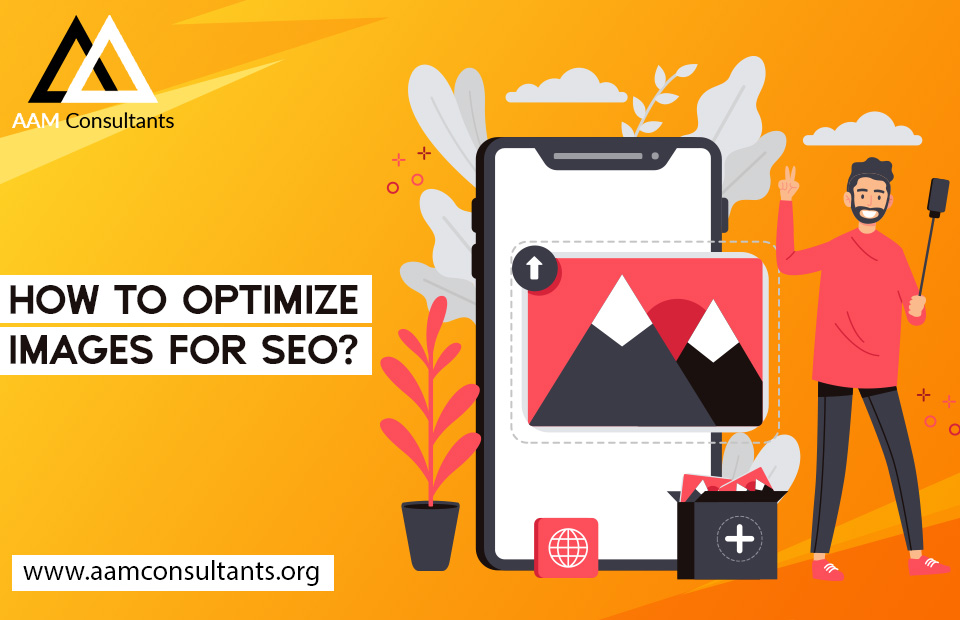Images are vital for your website and your ability to engage your visitors and customers. Your content will be much more accessible and appealing to the people visiting your site when you have the right images in place and when those images are properly optimized for SEO.
We’re going to discuss today what it takes to properly optimize your images for SEO and what that looks like in practice. We’ll cover what that means and why it’s so important below, before talking about the steps you need to take to optimize your images. So read on now if you want to find out more.
Hire AAM Consultants for link building and SEO Services.
What is Image Optimization in SEO?
Optimizing the images you use on your website has a few different purposes behind it. It’s about making sure that the images you use are of a high quality and, of course, look great on your site. It’s also about making sure that the format and dimensions are correct, the size works and the resolution is good, all while keeping the file size of the image as small as it possibly can be.
There are lots of steps that need to be taken when going through the optimization process, and that’s what we’re going to talk about later in this guide. We’re also going to look at precisely why image optimization is so important from an SEO point of view.
Why is Image Optimization Important?
When you have optimized images, they act as less of a drain on your website and how it performs. As a direct consequence of that, you’ll find that your website is able to load much quicker when your images are properly optimized. This matters because when your website offers slow loading times, this immediately frustrates people and many of them will leave before they get a chance to see what your website has to offer. When visitors have a fast and smooth experience, they’ll be back again in the future.
As well as improving the loading times, optimized images will also improve SEO outcomes. Google will not boost the ranking of websites that load slowly; it’s known for not liking slow loading pages. So if you want to improve your ranking on Google and other major search engines, your site and your images need to be properly optimized.
Conversions will also be enhanced when you have optimized images that allow for a fast and smooth viewing experience. Research shows that loading times are closely linked to conversion rates, so if you want to make sure that your website converts as many people as possible, you should be sure to optimize your images correctly.
How to Optimize Images:
Choose the Right Images
First of all, you need to be choosing the right kinds of images. The images should be relevant to your content and offer more context. That way, they’ll draw more people in and break up the text to encourage people to keep reading. The wrong images can do as much damage to your page as poorly formatted images.
Ensure They’re of Good Quality
Be sure to check the quality and resolution of the images before you add them to your site. If images are of a low resolution, they might appear blurred and pixelated when you add them to your web page, and that’s not a good look. It’s something you should pay close attention to.
Resize the Images
You can resize images with a higher resolution, making them smaller in order to reduce the extent to which they slow down your page load times. You can also compress the images to make the file size smaller, but don’t go too far with this as it can lead to poorer quality images.
Choose the Right Format
The format of the images is something else you should try to pay attention to. There are costs and benefits associated with every image format. JPEGs are the most flexible and probably the format you should stick to for most types of images and photos. For very simple images, PNG files can do the job too.
Optimize the File Names
Next, you should consider the file names you choose for your images. This will impact ranking in image search results, so you should try to include target keywords, separating them with hyphens as opposed to underscores. Make the name descriptive and clear for better results and better SEO outcomes.
Write SEO-Friendly Alt Text
The alt text attached to the image will also have an impact on search engine outcomes. You should try to write an alt text that’s descriptive and adds some context to what the image is displaying. This can also improve the accessibility of your web page as it can be read aloud for people with sight impairments and disabilities.
Optimize the Placement of the Image
The placement of your images will also have an impact here. You should try to place the image somewhere that makes sense within the context of the page. Maybe the image complements a particular passage in a written article, for example.
Try to Use Unique Images
Stock photos have their benefits, but if you want to achieve real SEO benefits, you need to use images that are as unique as possible. Creating your own images will be better for SEO as search engines always give priority to unique content, which applies to images as much as it does written content.
Use a Sitemap
Finally, you should start using a sitemap on your website if you’re not doing so already. In simple terms, it’s a map of all the content on your website. They give information that search engines are looking for, which allows the crawlers to identify every image on your website too.
Be sure to make the most of each of the tips and ideas discussed above if you want to optimize your images and improve your SEO outcomes. Once you know what you’re doing, it becomes like second nature and your content will be able to reach its full potential much more easily.




